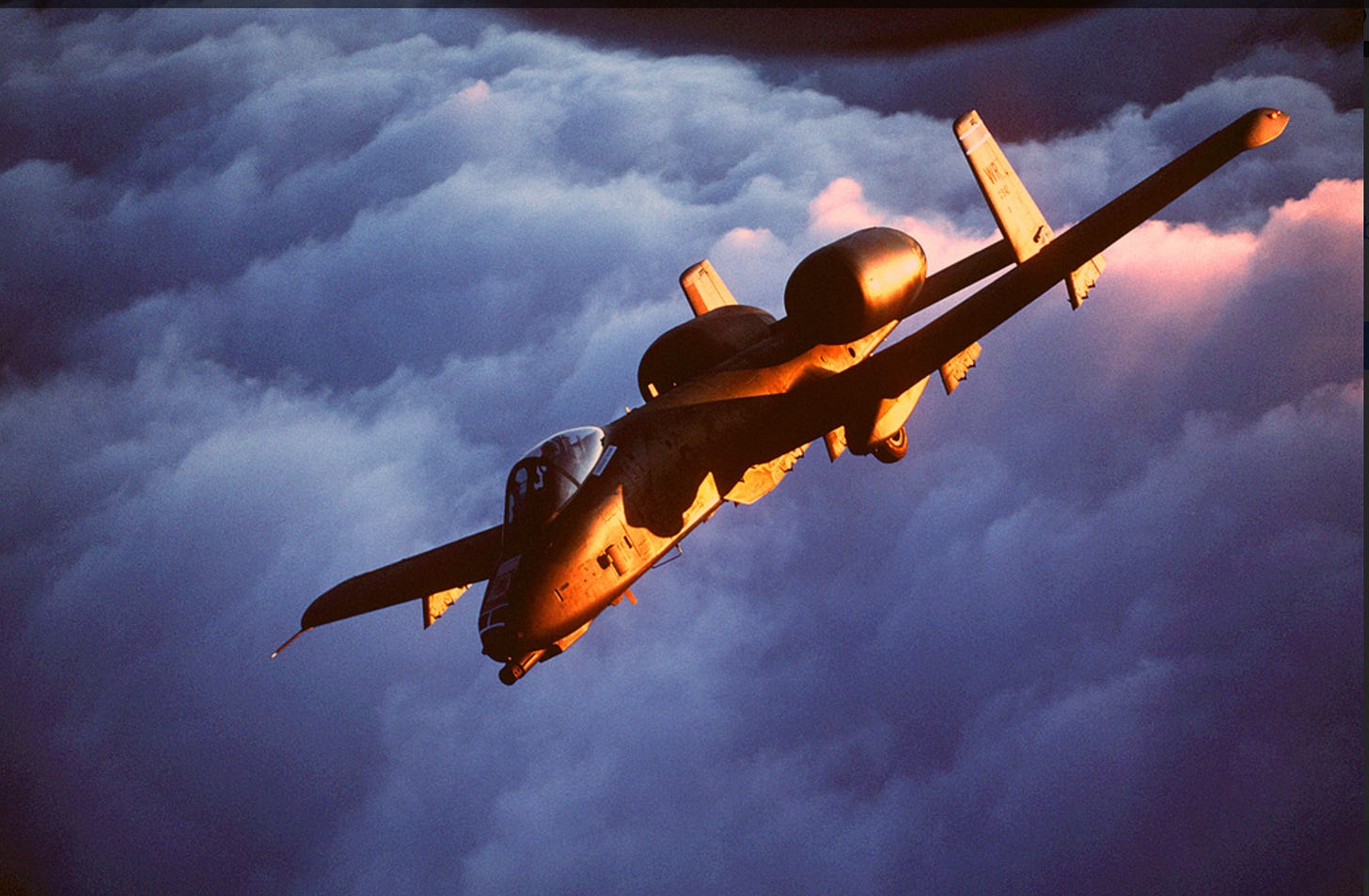Hanging with the BRRTTTT Pack

The A-10 Thunderbolt II is a giant flying rotary cannon, wrapped in armor and looking for trouble. Former USAF Staff Sergeant TJ NIZNIK cared for this ugly death machine at the height of its potency. Here, he reveals all about the A-10’s needs, the danger of ‘Hawg Bites’, and what he loved and hated about keeping the A-10 alive.
The A-10 is famously robust. Was there anything unusual about the design or construction from a Crew Chief’s perspective?

Oh yes, the A-10 was designed with maintenance personnel in mind. Large access panels have smaller access panels. The design of separating the engines on pylons off the fuselage increased survivability, which means engines were interchangeable. Every hydraulic part has a primary and a secondary system. This is the double in triple redundancy of system power. Of course, twice the systems also mean twice the tubing, fittings, reservoirs, and accumulators. The third part of the triple redundancy is the cable and pulley system known as manual reversion. Large access panels help make maintenance easy by using high-torque Allen-head fasteners. The smaller access panels within are usually for inspection or servicing aircraft systems. The aircraft is tall, much larger than most people realize. One can walk under 70 percent of the jet without having to duck their heads. This leads to most of us have, Hawg Bites. Everyone has a scar on their head from hitting the corner of a weapons pylon or a protruding antenna. I would say that, as far as maintaining a tactical aircraft, the A-10 is the most friendly.

Did the A-10 require a lot of looking after? What were the common maintenance fixes it needed?
This is a great question. I worked on this aircraft all over from 1986 when I joined, and up to the time I retired in 2011. The hot, muggy weather of England AFB, Louisiana to the cold and damp RAF Alconbury (sorry guys but it’s true and you know it!), to the hot dry heat of Nellis AFB, Nevady to the very frozen Eielson AFB, Alaska, to my final assignment here at Moody AFB, Georgia. Each location had specific maintenance requirements that were unique to the location. For instance, at England AFB, hydroplaning was a factor, so the aircraft tires had an average 2/32 minimum depth to prevent the condition. Whereas, in Eielson AFB, we disassemble each landing gear and install new o-rings and packings each fall. This is needed because of the frozen temperatures that routine got down to -45 degree F, the older internal packings would roll and collapse the gear. Nobody likes a flat landing strut. The most common fixes were tyre changes, tightening and replacing screws, radio and comm/nav faults, and the never-ending hydraulic leak.

Most systems go until failure and consistently fail at the worst possible time. We do have time changes based upon the number of hours interval (every 100 flying hours) or a calendar interval (every 30 days). Major systems like engines, gun or actuators will have a much longer period between scheduled changes. We usually have more unscheduled failures that occur before the actual period ends, except for the gun system. That is extremely reliable.
Hush-Kit Aviation Newsletter is a reader-supported publication. To receive new posts and support my work, consider becoming a free or paid subscriber.Subscribed
How many hours of maintenance per flight hour did it need? What was most time-consuming?

Day shift usually had about 1.5 hours between flights to get it inspected, rearmed and ready for aircrew to show. Nights, however, had a much longer inspection that would take anywhere between 1-2 hours. This really depends upon whether or not the plane flew or not since the last preflight. Considering that everything went well between the mechanics, weapons and specialists and refueling, I’d say 3-4 hours per jet. If there were discrepancies, we’d work up to 12 hours and if not completed, we’d call in the day shift crew chief and specialist to complete the work to get it ready to fly for the next day. This is the best part of the swing shift. Swings were never routine and always different, especially when you have a fleet of 12-18 jets to get ready. The most time-consuming events were the operational checks. At times a 30-minute part replacement drove the aircraft to be jacked off the ground, landing gears swung up and down several times and every hydraulic system operated under power.
What do you love most about the A-10?

For the first aircraft in my career versus say an F-4, I’d say the A-10 was by far the easiest plane to work on. I spent a lot of time with my arms raised over my head, though, because it’s so big and roomy. Of course, the best thing about the A-10 is the..




